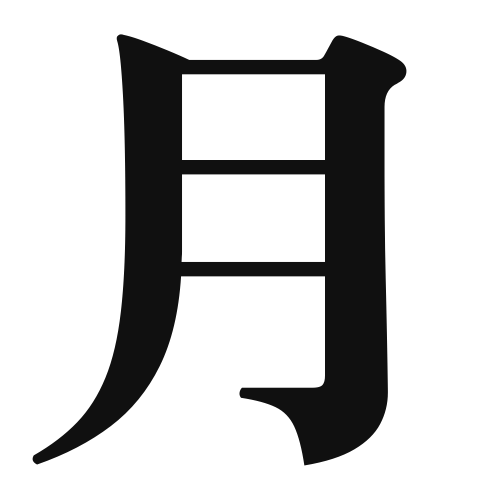1. Overview of Meaning
The kanji “月” (pronounced “tsuki” in Japanese) means “moon” or “month.” It represents the celestial body that illuminates the night sky and is also associated with the passage of time in terms of months.
2. Formation and Radical
Formation of the Kanji: The kanji “月” is a pictogram that originally depicted the shape of the moon. It is classified as a pictographic character, as it visually represents the object it signifies.
Radical: The radical for “月” is also “月,” which is used in other kanji related to the moon or flesh, depending on the context.
3. Examples of Usage
Common Words and Phrases: Some frequently used words that include “月” are:
- 月曜日 (getsuyoubi) – Monday
- 満月 (mangetsu) – Full moon
- 新月 (shingetsu) – New moon
Example Sentences in Daily Conversation:
- 今夜は月がとてもきれいです。 (Kon’ya wa tsuki ga totemo kirei desu.) – The moon is very beautiful tonight.
- 来月、旅行に行きます。 (Raigetsu, ryokou ni ikimasu.) – I will go on a trip next month.
4. Synonyms and Antonyms
Similar Kanji: A similar kanji is “明” (mei), which means “bright.” While “月” refers specifically to the moon, “明” can refer to brightness in general.
Antonyms: An antonym for “月” could be “太陽” (taiyou), which means “sun.” The sun and moon are often seen as opposites in terms of day and night.
5. Cultural and Historical Background
Relation to Japanese Culture: The moon holds significant cultural importance in Japan, often symbolizing beauty and tranquility. Festivals such as Tsukimi (moon viewing) celebrate the beauty of the harvest moon.
Proverbs and Idioms: One common saying is “月とすっぽん” (tsuki to suppon), which means “as different as the moon and a soft-shelled turtle,” used to describe two things that are completely different.
